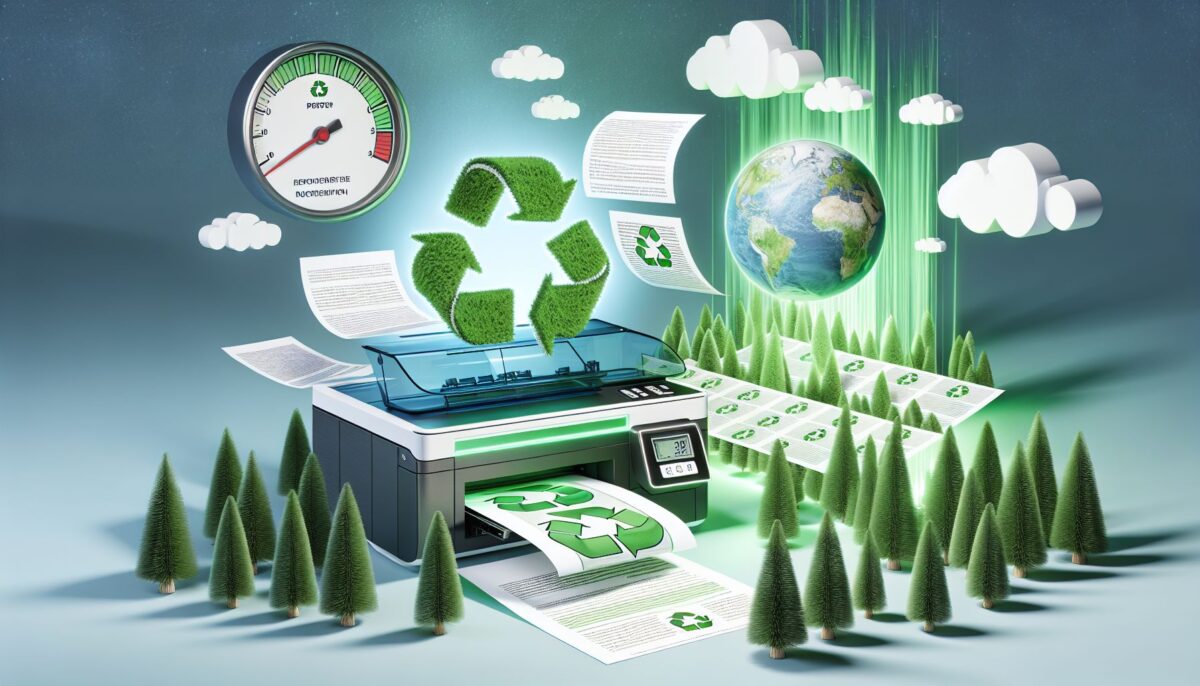In today’s world, sustainability has become a top priority for individuals and businesses alike. The printing industry, in particular, has come under scrutiny for its environmental impact. With the rise of digital media, many have questioned the necessity of print materials and the environmental consequences of producing them. However, the printing industry is not going away anytime soon, and finding sustainable printing practices is crucial for its continued existence.
Introduction to Sustainable Printing
Printing has been an essential part of communication and information dissemination for centuries. From books to flyers, brochures to packaging, printing plays a significant role in our daily lives. However, the traditional printing process can be quite harmful to the environment. The use of paper, ink, and energy in printing can contribute to deforestation, pollution, and carbon emissions.
In recent years, there has been a shift towards more sustainable printing practices. Companies are increasingly aware of their environmental impact and are looking for ways to reduce it. Sustainable printing involves using environmentally friendly materials, reducing waste, and minimizing energy consumption. By adopting these practices, the printing industry can contribute to a more sustainable future.
Sustainable Printing Practices
There are several key practices that can make printing more sustainable.
1. Use of Recycled Paper
One of the most straightforward ways to make printing more sustainable is by using recycled paper. Recycled paper is made from post-consumer waste, reducing the need for new trees to be cut down. By choosing recycled paper, companies can help protect forests and reduce their carbon footprint.
2. Eco-Friendly Inks
Traditional inks can contain harmful chemicals that are harmful to the environment. Eco-friendly inks are made from natural and renewable sources, reducing the environmental impact of printing. These inks are also safer for workers and consumers, making them a more sustainable choice.
3. Energy Efficiency
Printing presses consume a significant amount of energy, contributing to carbon emissions. By using energy-efficient equipment and practices, companies can reduce their energy consumption and environmental impact. This can include using LED lighting, investing in high-efficiency printers, and optimizing workflow processes to minimize energy waste.
4. Waste Reduction
Printing often results in a significant amount of waste, from misprints to surplus materials. By reducing waste and recycling where possible, companies can minimize their environmental impact. This can include implementing print-on-demand services, using digital proofs instead of physical ones, and ensuring proper disposal of ink cartridges and other materials.
5. Sustainable Packaging
In addition to the printing process itself, companies should also consider the sustainability of their packaging materials. Using recycled or biodegradable packaging can further reduce the environmental impact of printing. By choosing sustainable packaging materials, companies can ensure that their entire product lifecycle is as eco-friendly as possible.
The Benefits of Sustainable Printing
There are several benefits to adopting sustainable printing practices.
1. Environmental Impact
Perhaps the most obvious benefit of sustainable printing is its positive impact on the environment. By reducing resource consumption, carbon emissions, and waste, companies can help protect natural resources and reduce their environmental footprint.
2. Cost Savings
In addition to its environmental benefits, sustainable printing can also lead to cost savings for companies. By reducing energy consumption, waste, and material costs, companies can lower their overall printing expenses. In the long run, sustainable printing practices can help companies save money while benefiting the environment.
3. Brand Image
Consumers are becoming increasingly conscious of sustainability issues and are more likely to support companies that demonstrate a commitment to environmental responsibility. By adopting sustainable printing practices, companies can enhance their brand image and attract environmentally conscious customers.
Conclusion
Sustainable printing is the future of the printing industry. By adopting environmentally friendly materials, reducing waste, and minimizing energy consumption, companies can help protect the environment while saving costs and enhancing their brand image. As consumers become more aware of sustainability issues, companies that prioritize sustainability will have a competitive advantage. Sustainable printing is not just a trend; it is a necessity for the future of the printing industry.

